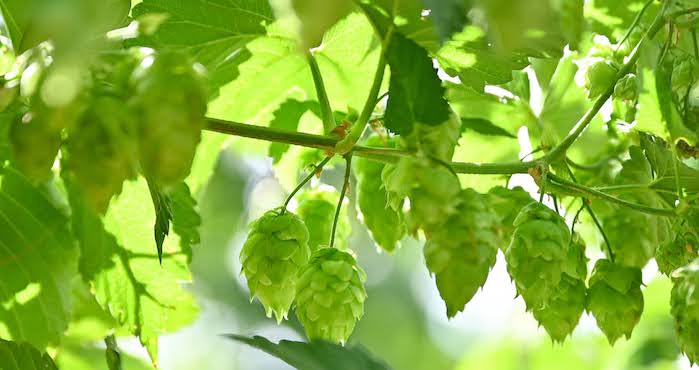Hop Science Newsletter (January 2018)
In this issue: the impact of pollinated hops in beer, experimenting with Mosaic and yeast, and thiol potency.

WHAT IS THE IMPACT OF POLLINATED HOPS IN BEER?
In the world of hops, the male plants are mostly considered as gate-crashers and utilized only for controlled pollination. In English hops, pollinated cones are accepted, however over the centuries prejudices have been established that seeded hops decrease flavour stability due to increased amounts of fatty acids and also cause lower alpha acid concentration. These German researchers were able to show in comparative brewing trials with seeded and unseeded hops that these two points are not necessarily true. However they also discovered that the beers with seeded hops showed a higher beta-glucosidase activity, though a higher content of aroma active compounds and a higher aroma intensity in the beers could not be shown. So there is maybe too much ado about nothing.¹
THE YEAST TAKES IT ALL!
Beta-myrcene is a potent but also very volatile hop aroma compound that can contribute to hop flavours with “herbaceous”, “resinous”, “green”, “balsamic”, “fresh hops”. Too high concentrations of myrcene sometimes are considered unpleasant in regards to flavour. This German team worked with the hop variety Mosaic with different yeast strains to see where the myrcene actually ends up.
They confirmed the release of hop aroma compounds during fermentation in the gas phase with increasing amounts at higher fermentation temperatures, and were also able to show that the yeast basically absorbs all of the myrcene with no possibilities to redissolving it in beer again. Whereas other hop aroma compounds such as linalool are not influenced significantly by the yeast.²
THIOL POTENCY IS 100! TRY IT!
An impressive theoretical approach is being undertaken by these French researchers, whom are experts in analysing thiols and thiol precursors in beer, malt and hops. For a couple of years, brewing scientists show that these fruity thiols are key aroma compounds with extremely low flavour thresholds. However the free form of these thiols varies significantly among hop varieties and also in beer. The potential of the thiol aroma compounds is extremely high, however the majority of these compounds is linked to larger protein-type molecules and only released by specific enzyme activity.
In this work, a calculation is proposed to determine the thiol potential for the three compounds 3MH, 3MHA, 4MMP. Hop varieties with a high free potential would be more suitable for dry hopping while hop varieties with a high bound potential are more suitable for an earlier addition. The hypothesis is very fascinating but needs to be further investigated with brewing trials. If a strong sensory correlation is established, the proposed “thiol potency values” could provide great value to brewers.3
OUR HOP HARVEST GUIDE – CROP 2017
The crop year 2017 produced a special harvest. In central Europe in particular, a long period of hot
weather and heavy rainfall through most of August influenced the aroma accentuation of the crop. In all other
growing areas, the climatic conditions were pretty good. This 4th edition of The Barth-Haas Hop Harvest Guide provides an assessment of a total of 32 hop varieties: 16 from Germany, 6 from the U.S., 5 from Slovenia, 3 from Czech Republic, and 1 from each France and Poland. The 2017 harvest is characterized by strongly pronounced, and in some cases, unexpected aromas. Get your inspiration now.
REFERENCES:
1. Haselback, K.: Characterization of the Unfertilized and Fertilized Hop Varieties Progress and Hallertauer Tradition – Analysis of Free and Glycosidic-Bound Flavor Compounds and ß-Glucosidase Activity, November / December 2017 (Vol. 70), http://www.barthhaasgroup.com/images/mediacenter/downloads/pdfs/811/hopharvestguide2017.pdf
2. Haselbeck, K. et al: On the Fate of ß-Myrcene during Fermentation – The Role of Stripping and Uptake of Hop Oil Components by Brewer’s Yeast in DryHopped Wort and Beer, November / December 2017 (Vol. 70) http://www.brewingscience.de/index.php?tpl=table_of_ contents&year=2017&edition=0011%2F0012&article=90603
3. Roland, A.: A Powerful Analytical Indicator to Drive Varietal Thiols Release in Beers: The “Thiol Potency” http://www.brewingscience.de/index.php?tpl=table_of_contents&year=2017&edition=0011%2F0012&article=90604
